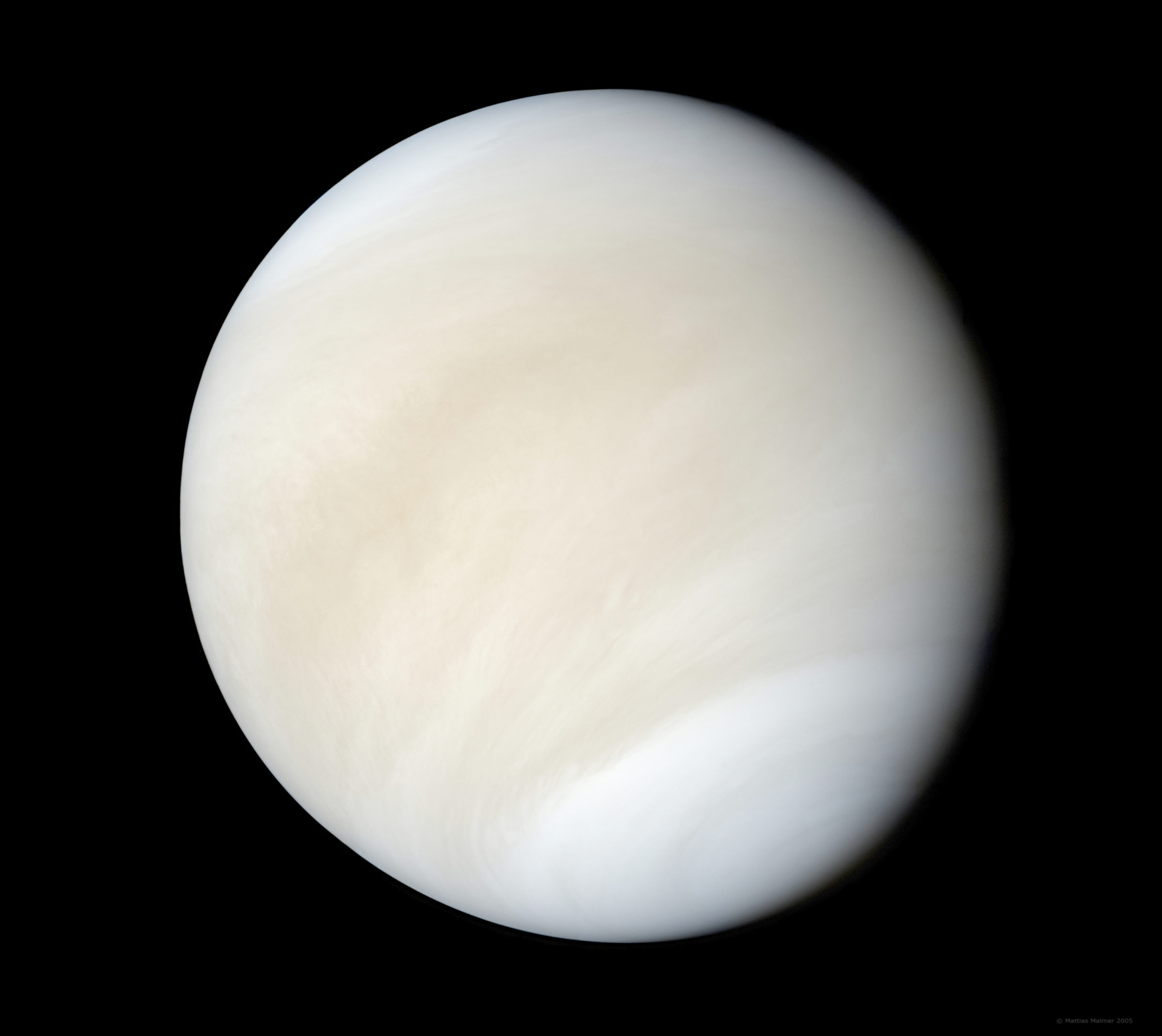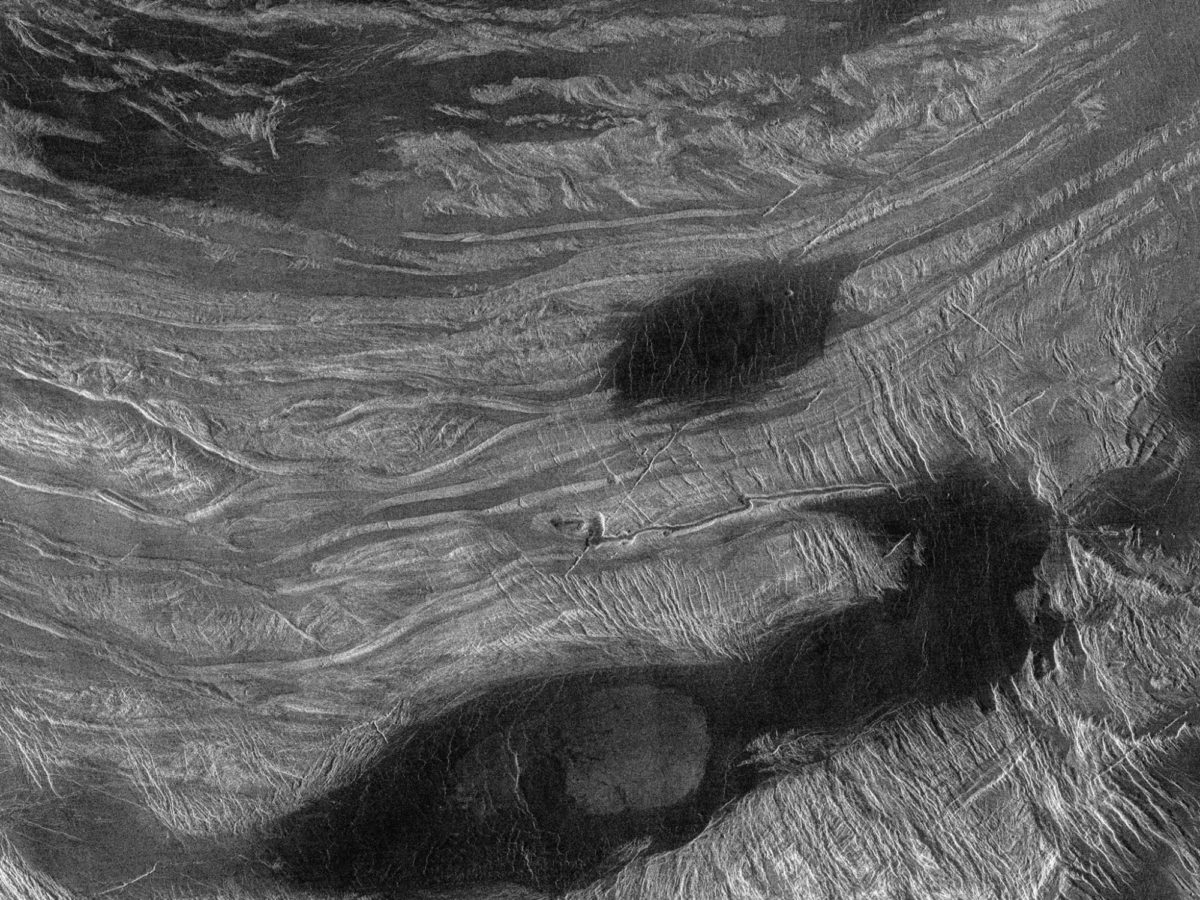Jason Davis • Dec 08, 2017
The case for Venus
NASA is about to pick finalists for its next New Frontiers mission. Will Venus make the cut?
This month, NASA will narrow down a list of 12 proposals for a future planetary exploration mission. There are six possible destinations: Venus, the Moon, a comet, Saturn, Enceladus, and Titan. All are compelling, but which will make the cut? The potentially life-harboring plumes of Enceladus? A sample return from a comet? What about Venus?
What about Venus, indeed. It's a question many planetary scientists have been asking NASA for almost three decades. The last time the agency sent a spacecraft there was 1989, when five astronauts deployed the Magellan probe from space shuttle Atlantis. Magellan rode an attached rocket booster to Venus, arriving in 1990 for a four-year stay before plunging into the planet's atmosphere.
Venus is famously inhospitable. Its surface temperatures and pressures are high enough to melt lead, and its cloudy, carbon dioxide-laden atmosphere prevents us from seeing the surface.
By comparison, Mars seems like a tropical destination, so it's no wonder NASA has spent so much effort exploring that planet with robots, with the goal of eventually sending humans. But in many ways, Earth is more like Venus than Mars. Venus is only 5 percent smaller than Earth and 18 percent less massive. Mars, on the other hand, is 47 percent smaller, and 90 percent less massive. Venus is also three-and-a-half times closer to Earth than Mars.
About four billion years ago, it's possible that Venus, Earth and Mars were all habitable. Yet life only flourished on Earth. What happened?
"The irony is that, unlike Mars, Venus is Earth-sized and thus the best test of how the two planets diverged climatically and geologically," says Martha Gilmore, who co-chairs the Venus Exploration Analysis Group (VEXAG), which helps NASA plan and prioritize Venus exploration.
This question is also compelling as we discover more Earth-sized exoplanets around other stars. Are these worlds likely to be more like Venus, or Earth? Figuring out the answer is critical as we search for life beyond Earth.
But despite being closely associated with such key cosmic questions, Venus routinely gets passed over for other destinations. It's a technically challenging world to visit, and the approaches and instruments that work well at other places don't work the same way at Venus.
"I would say that Venus is trapped in a negative-feedback cycle," says Bob Grimm, the VEXAG chair. "There has not been a U.S. mission in nearly 30 years, so interest is narrower, which in turn has led to no new missions."

Forever playing second fiddle
Every 10 years, the planetary science community prioritizes all the questions they want to answer during the next decade, laying them out in a long report called the Decadal Survey.
There are three types of planetary missions: Flagship, New Frontiers, and Discovery. Flagship missions are planned at the agency level, while New Frontiers and Discovery missions are competitively selected. New Frontiers missions are cost-capped at around a billion dollars, and Discovery missions go for about a half-billion.
NASA hasn't been willing to spring for a Flagship mission to Venus since Magellan, but the past two Decadal Surveys, in 2003 and 2013, have listed Venus as a potential destination for a Discovery or New Frontiers-class mission.
Last year, when NASA picked its latest Discovery mission, there were five finalists. Two were Venus proposals, but the agency instead picked two asteroid missions called Lucy and Psyche. This stung not just Venus scientists, but others within the larger space science community.
"Plenty of my colleagues outside the Venus community were aghast when a Venus mission was not selected in the last Discovery round," Gilmore says. "I think there is a sense in the planetary community as a whole, not just the Venus community, that Venus is quite overdue."
The scientists behind both of the losing Venus missions have re-tooled their proposals for a larger, New Frontiers budget. But more money is no guarantee of success; the last winning New Frontiers mission, OSIRIS-REx, also beat out a Venus finalist. That losing Venus mission is also trying again, giving NASA a total of three Venus missions to choose from when it makes the next New Frontiers selection this month.
But why does Venus keep losing out in the first place?
One theory, says Van Kane, who writes about future planetary exploration missions, is that there's virtually no chance to find life on Venus.
"NASA's planetary program has an emphasis on the search for life or the conditions that could lead to life," he says. "That puts Venus missions in competition with every other mission that isn't focused on life. That's a long list."
I asked everyone I interviewed for this story why NASA keeps passing over Venus, and almost everyone responded with some variation of "because it's hard." But "hard" may not be the right word.
"No planetary mission is easy," says Gilmore. "One could robustly argue that it is easier to put something in orbit or on the surface of Venus (the latter the Soviets did in 1970) than it is to land on Europa or rove on Mars," she said.
A more accurate explanation might be that Venus hides its secrets better than other destinations, meaning missions to places like Mars tend to get more science bang for the buck.
Take, for instance, the context camera aboard the Mars Reconnaissance Orbiter, Kane says. That same camera could conduct relatively inexpensive, global composition mapping of Venus—except that it wouldn't work there, because Venus's atmosphere makes that approach useless.
Similarly, a short-lived Venus lander only able to analyze its immediate vicinity might actually cost the same as a clone of the Mars Opportunity rover. But we can't send Opportunity to Venus because of the planet's hellish environment.

The concepts
The three Venus New Frontiers finalists are technically and operationally diverse. During a 2010 Discovery round, similar mission diversity contributed to an impression that the Venus community was split about how best to explore the planet. To address this, VEXAG created a detailed plan, vetted by the Venus community, outlining integrated goals and objectives for Venus exploration. It will be up to NASA leadership to decide which of the current mission concepts are technically feasible and fulfill the goals outlined in the Decadal Survey.
VISAGE, the Venus In Situ Atmospheric and Geochemical Explorer, is the mission that lost out to OSIRIS-REx during the last New Frontiers selection. VISAGE is an all-in-one descent probe and lander proposed by Larry Esposito, a planetary scientist at the University of Colorado. VISAGE would read the chemical makeup of the atmosphere during descent, and on the surface, two drills would collect samples, shunt them into a pressurized interior, and analyze them with spectrometers.
VICI, which stands for Venus In situ Composition Investigations, is a proposal by Lori Glaze, head of the planetary geology, geophysics and geochemistry lab at NASA's Goddard Space Flight Center. VICI consists of twin descent-probe-and-lander vehicles, each to be dropped off by a single carrier spacecraft during two Venus flybys.
Unlike VISAGE, the VICI landers take their readings from inside the spacecraft. An instrument based on Mars Curiosity's ChemCam measures surface composition by shooting a laser through a small window, and a gamma ray spectrometer reads the rocks beneath the lander.
VICI and VISAGE each target different terrain on Venus. VISAGE would aim for Venus's rolling lava plains, which are generally smooth and flat.
"Most of Venus's surface is this type of terrain," says Esposito. "Since VISAGE visits a single location, it should be characteristic of the planet."
The VICI landers, on the other hand, would head for older, more fractured Venus regions called tessera, providing insight into what the planet was like before lava flooded vast regions of its surface.
"[Tessera] seem to be made of rocks that are significantly different from the lava plains. That may imply much more water was involved in their formation," Glaze says. Examining those rocks could answer key questions about the history of the planet's water.
VICI, as well as a third currently proposed mission, the Venus Origins eXplorer (VOX), grew out of Venus concepts that lost during the last Discovery mission selection.
VOX eschews the lander concept entirely, opting instead to unpack Venus's surface composition from orbit. The principal investigator, Suzanne Smrekar, serves as the deputy PI for NASA's InSight mission at the Jet Propulsion Laboratory.
"There are two obstacles to seeing the surface, the clouds and the thick [carbon dioxide] atmosphere," Smrekar says. VOX would get around this limitation by using narrow wavelength "windows" where carbon dioxide doesn't absorb much energy, allowing the spacecraft to compile surface imagery with a visible and near-infrared spectrometer. As for the clouds, the orbiter would image them in another wavelength and digitally "subtract" them from the surface images. The imaging technique is similar to how the Cassini cameras mapped Titan.
VOX would radar-map the surface at a 15 to 30 meters per pixel resolution—an order of magnitude better than Magellan. It would also collect topography data at 250 meters horizontal and 10 meters vertical resolution—two orders of magnitude better than Magellan.
VOX also has an atmospheric probe that would toe-dip into Venus's upper atmosphere, collecting a small gas sample before skipping back out into orbit. The sample would be measured by a miniature onboard mass spectrometer.

Waiting to be selected
After NASA narrows down the current list of New Frontiers finalists this month, each mission will proceed with further development until 2019, when the agency makes a final selection. The winning spacecraft is expected to launch in the mid-2020s.
Will Venus get the nod? If so, it could revitalize a corner of the planetary science community that hasn't had a flood of new data since the 1990s. Only Europe's Venus Express and Japan's Akatsuki have been back since Magellan, and both missions were low-budget, equipped with relatively modest instrument packages.
As a barren volcano world, Venus has to fight for attention against attention-grabbing destinations like Mars, which has a more benign environment for humans, and ocean worlds like Europa, which could actively harbor life.
But that doesn't mean Venus isn't interesting. Gilmore says despite the small community, it isn't for lack of interest, attempts or brilliance that NASA hasn't been back to Venus since Magellan.
"We're all just waiting for one to be selected," she says.
This article was updated 12/11/17 to clarify VEXAG's integrated goals and objectives for Venus exploration.
Support our core enterprises
Your support powers our mission to explore worlds, find life, and defend Earth. You make all the difference when you make a gift. Give today!
Donate

 Explore Worlds
Explore Worlds Find Life
Find Life Defend Earth
Defend Earth

